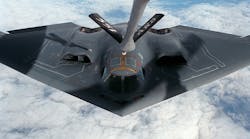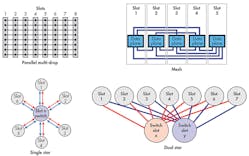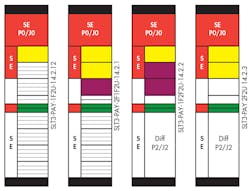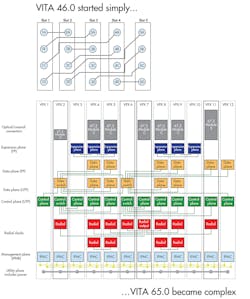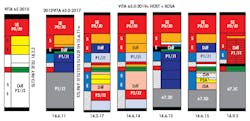Rugged systems are crucial in the military and avionics spaces. Targeting them with commercial off-the-shelf (COTS) systems can help reduce the cost and increase the number of tools designers have to create new systems.
In the age of parallel buses, the types of backplanes and boards were significantly easier to integrate because of the more limited number of configuration options needed to address a wide range of solutions. High-speed serial interfaces have replaced parallel interfaces, but these are point-to-point and require much different backplane connectivity solutions (Fig. 1).
1. Parallel bus systems like ISA and PCI allow for a single backplane architecture, but point-to-point systems like Ethernet and PCI Express have multiple possible configurations. This, of course, adds complexity to backplane design. (Courtesy of Elma Electronics)
VITA’s VPX standards have helped standardize a significant number of high-speed serial backplane designs (Fig. 2). Unfortunately, support for arbitrary interfaces on the P1 and P2 connectors still forced the use of custom backplanes.
2. VITA VPX standards did define some of the board’s backplane connections, but left much of it up to the designer.
The P0 connector would contain the interface connections for PCI Express or Ethernet. VITA 46 allowed for the implementation of a full mesh network employing five slots and direct connections between each slot (Fig. 3). VITA 65.0 went on to define more complex configurations using more signals. It also included management support using an IPMI bus.
3. VITA 46.0 defined simple backplane connections where only communication links were involved. VITA 65.0 implementations were quite a bit more complex.
The latest VITA 65 slot-profile definitions address specific configurations that define most or all of the pins, enabling backplanes to match the type of board that will work with a slot. These target different board types, such as processor boards and interface boards. Some definitions include VITA 67 RF connectors (Fig 4).
4. Currently in the queue for VITA 65.0 are slots that have most of the connections defined. This makes it possible for board and backplane vendors to deliver interchangeable solutions.
The Hardware Open Systems Technology (HOST) and Sensor Open Systems Architecture (SOSA) committees are working with the VITA Standards Organization (VSO) to create these new, fully defined slot profiles. The end result from having more standardized slots and boards will be a greater array of options for developers and increased standardization of platforms. The approach is being fostered by all three branches of the U.S. military, which is only one group that will benefit from these standards.
